Introducing EMV at the Point of Sale.
EMV is a fraud reduction technology that can help protect merchants against losses from accepting counterfeit and lost or stolen payment cards at the point-of-sale. EMV cards contain embedded microprocessors or chips that interact with the point-of-sale device to ensure the validity of a payment card and the person using the card. This kind of chip or smart card technology adds layers of security against fraud and is virtually impossible to duplicate.
First introduced in 1996, there are now more than 1.25 billion active EMV compliant chip-based cards used at 15.4 million EMV acceptance terminals in over 80 countries. With some recent industry announcements, it’s likely only a matter of time before smart card technology becomes a widely adopted standard in the U.S. as well.
Go Beyond: Fraud Protection At The POS
These fraud-preventing microchips can reside inside a payment card, a fob or a mobile device. Regardless of the form factor, the chip technology adds one of the most important payment transaction benefits – enhanced fraud protection. Whether the payment card is inserted into the chip-enabled slot reader (contact) or waved above the device (contactless), the data on the chip ensures the card is authentic, and the PIN or signature ensures that the person presenting the card is the rightful cardholder.
First Data Advantages: Chip Technology Benefits
Increases security and fraud protection
- Prevents the use of counterfeit, lost and stolen cards
- Reduces skimming at the point of sale
- Decreases fraudulent transactions and charge backs
- Blocks the ability to copy the contents of the chip to another card
Improves customer service and offers potentially faster checkouts
- Enables PIN transactions for both credit and debit cards, reducing the time needed to obtain a signature and the need for authorization referrals
- Supports contactless transactions which are approximately 53 percent faster than a traditional magnetic stripe card transaction.²
Drives innovation in emerging consumer technologies
- Chip-based applications can be embedded into a mobile wallet, enabling consumers to pay via their mobile devices.
- Chip technology works on the same contactless technology that also enables mobile payments at the POS.
Boosts loyalty and repeat business
- New equipment purchases open the door to adding emerging technologies such as two-way NFC to push targeted offers to consumers via smart phones which can then be redeemed at the point of sale in a secure manner.
- Providing added protection for your customers can drive improved satisfaction and help increase loyalty.
Chip-enabled Payment Process
Using a smart, chip-based card to pay for an item requires a change in how the card is read at the point of sale. Consumers will need to adapt to a new behavior when conducting their payment transactions. Here’s how a consumer will conduct a chip-based transaction:
- Consumer inserts their smart card into the new chip-enabled slot on the front of
a POS device like the FD35 or they wave it in front of the contactless icon. - Most chip cards will also have a magnetic stripe, so if a chip card is swiped like a traditional payment card on the POS device, the device will prompt the customer to process a chip-enabled transaction using the chip-based device. NOTE: If the card is inserted into the device, it must remain inserted in the POS device throughout transaction. The card should not be removed until the terminal prompts its removal. Removing the card too early will cancel the transaction.
- The consumer will follow the prompts on the terminal’s screen, which may include entering a PIN for both debit and credit transactions.
- Once the user is verified and the purchase is approved, a receipt is printed.
- The card can then be removed when prompted. Associates will need to remind consumers to take their card once the transaction is complete. Chip-enabled cards will continue to have a magnetic stripe that enables them to work with non-chip reading terminals. For these transactions, the usual magnetic stripe transaction process applies.
The TransArmor Solution
Cardholder security is our first priority at First Data and smart card technology is just one of the many layers of security First Data offers. While EMV provides one layer of fraud protection, it does not protect or remove cardholder data from the payment process; it simply authenticates the card is valid, verifies funds are available and validates the user via a PIN number or signature.
Payment Solutions for Maximum Performance
Around the world every day, First Data makes payment transactions secure, fast and easy for merchants, financial institutions and their customers. We leverage our unparalleled product portfolio and expertise to deliver processing solutions that drive customer revenue and profitability. Whether the payment is by debit or credit, gift card, check or mobile phone, online or at the point of sale, First Data helps you maximize value for your business.
The First Data® TransArmor® solution is a multi-layered security solution that uses both encryption and tokenization technology to protect data in transit and at rest pre- and post authorization. The TransArmor solution protects against the theft or exposure of sensitive payment card data from the point of swipe through the storage in back-end systems. In addition, the TransArmor solution uses a card-based token that allows merchants to track consumers’ buying behaviors by payment card, which can be used in reporting, sales trends, loyalty and marketing programs. The TransArmor solution combined with chip-based technologies is the perfect combination of data theft protection and fraud prevention technologies.
- EMVCo, LLC, “About EMV”, href=”http://www.emvco.com/default.aspx
- EMVCo, LLC, “About EMV”, http://www.emvco.com/about_emv.aspx






